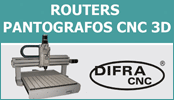
CANTISA’S GRID EFFECT EDGEBAND, INTERZUM AWARD'S WINNER
Cantisa is celebrating! The grid effect edgebanding is the first edgeband to receive an Interzum Award since this event has been held.
International products in all categories compete at the Interzum Awards, so this prize not only recognises originality in the design of edgeband, but it also shows recognition to Cantisa’s effort to give added value to edgebanding, considered so far a complement, by turning it into a more decorative element.
To be awarded with one of these prizes the product has to meet a number of very demanding requirements. The criteria are clear and challenging: high levels of innovation, original design, innovative materials and perfect functionality. The jury is made up of international experts in design and architecture. All this, has made the Interzum Awards one of the greatest recognition in the furniture industry.
AWARDS AND OPENING CEREMONY
Cantisa’s team was at the Awards Ceremony, held at the Theater am Tanzbrunnen in Cologne last Monday. There they collected the award given in the category of “High Product Quality” to the grid effect edgebanding. A recognition to their commitment to quality and innovation in their work.
This event marked the beginning of the 2019 edition of Interzum and has allowed us to know the trends and the future challenges in the design of furniture and interiors.
The winning edge-banding will be on display at the Interzum Fair Boulevard , in the passages between the halls. Come and meet the great winner!


IT MAY INTEREST YOU
 Nation reinforces prevention and training against forest fires
Nation reinforces prevention and training against forest fires
The director of the Federal Emergency Agency (AFE), Santiago Hardie, referred to the support that the Nation provides in fighting fires. He argued that the majority of igneous sources respond to human interventions and that, therefore, social awareness is a central tool to reduce environmental, material and human damage.
 The tallest palm tree in the world is in South America: it is the height of a 20-story building
The tallest palm tree in the world is in South America: it is the height of a 20-story building
The worlds tallest palm tree stands deep in South America, a giant that challenges the limits of plant life Deep in South America, between the fog and the mountains, hides a giant tree that few know about. Majestic and silent, challenging the world on what plant life can achieve.
 The discovery of methane-producing bacteria in trees rethinks the ecological role of forests
The discovery of methane-producing bacteria in trees rethinks the ecological role of forests
Pioneering study shows trees surprising internal microbial diversity and potential influence on global climate, driving novel strategies for agricultural and forestry management






















